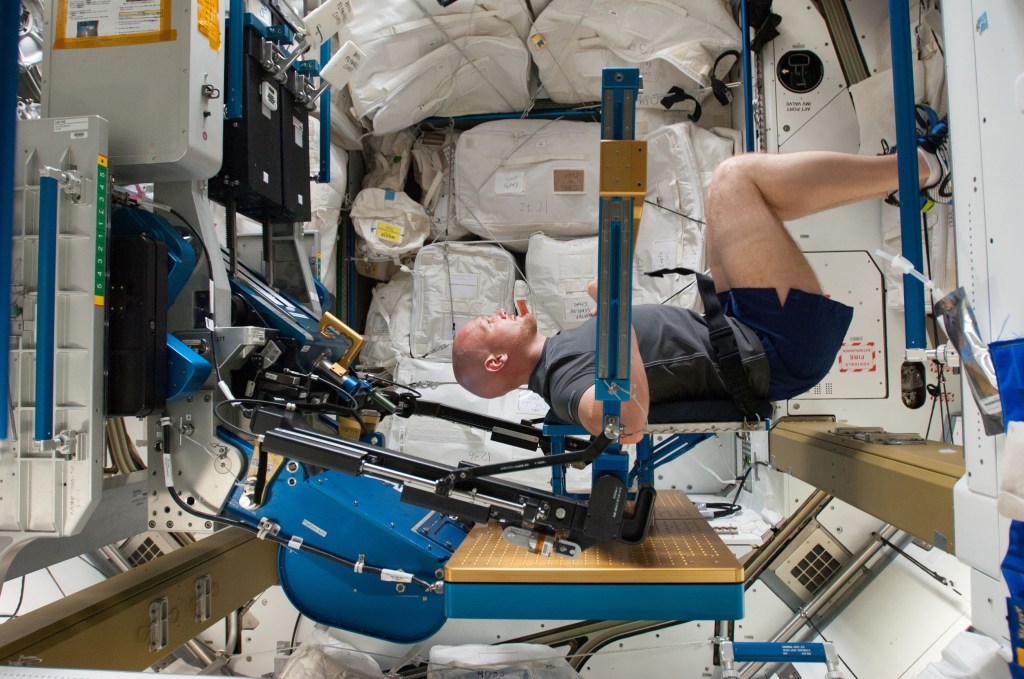Risk of Reduced Cardiorespiratory and Musculoskeletal Fitness
Living in microgravity can weaken the bones, muscles, and cardiopulmonary systems of astronauts, making it difficult for them to carry out critical mission tasks while also increasing the risk of injury. These physiological changes can make falling or tripping more likely, especially during gravitational transitions to the surface of the Moon or Mars, or when returning to their daily living on Earth.
What can be done about it?
Six to seven days a week, astronauts on the International Space Station perform resistance training and aerobic exercises for 1.5 hours per day to maintain their fitness and protect against muscle and bone loss. Crew members also undergo periodic fitness self-evaluations to help researchers monitor their health and fitness and to optimize the astronauts’ training regimen. Spacecraft set to carry astronauts to the Moon and Mars, however, will likely have less space for exercise equipment. Consequently, researchers are working to understand how to optimize both exercise machines and protocols to ensure that astronaut health is maintained on these deep space missions.
Did you know?
The effects of exposure to microgravity can vary substantially between individual astronauts. However, data from International Space Station missions indicates that average losses to strength and aerobic fitness are 10-12% of pre-mission levels. Depending on how it’s measured, between 12-38% of space station crew members lose more than 20% of their pre-mission fitness. Strength loss affects a larger proportion of crew members than does the decline in aerobic fitness. Losses are seen across physical performance areas, including upper and lower body strength and endurance, flexibility, aerobic fitness, agility, and coordination.
Formal risk description: Risk of mission performance decrements and adverse health outcomes resulting from reduced cardiorespiratory and musculoskeletal fitness
Research in support of this risk: Latest evidence
Explore more: Human System Risk Board resources
Related Content




























